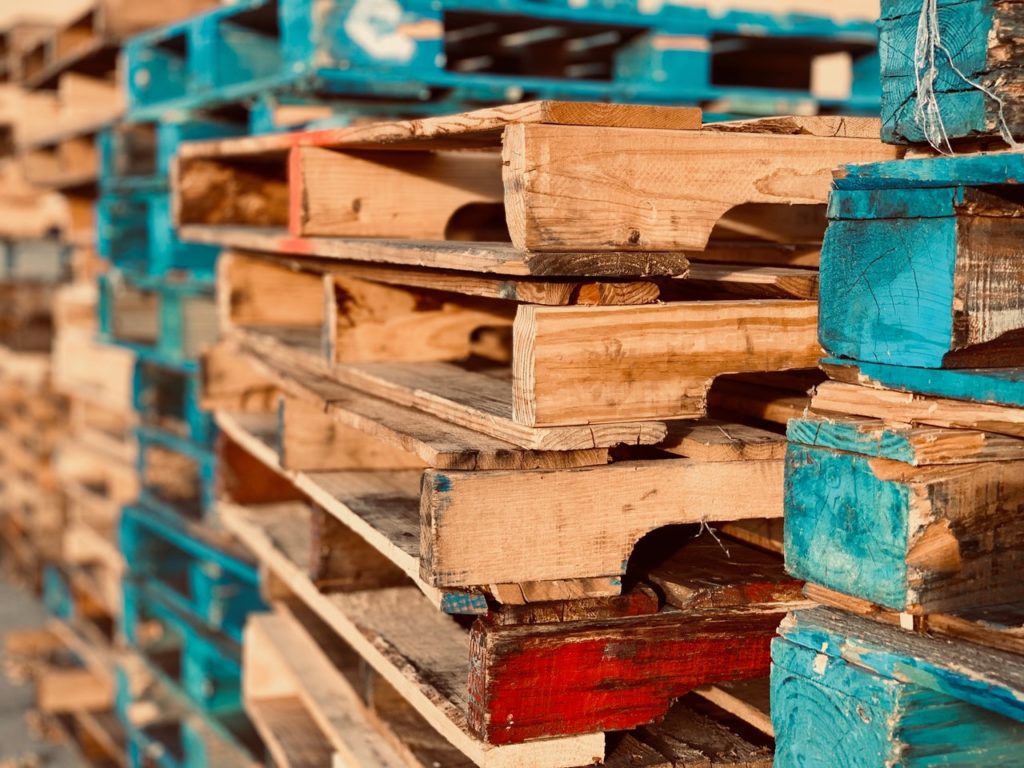Wooden pallets are more sustainable than plastic ones

The scientific results are in: in a sustainability contest between wooden and plastic shipping pallets, wood reigns supreme. You may not think the findings impact you, but shipping pallets play a bigger role in daily life — and global trade — than you may know.
You might not notice shipping pallets, but they are secretly all around you, making the world go ‘round. According to the National Wooden Pallet and Container Association, an estimated 1.8 billion pallets are used to move items in the United States every day.
Pallets are made from a variety of materials, but most — around 93 percent — are made of wood. Wooden pallets can be reused or upcycled (though there are some considerations about upcycling wooden pallets to know before your next Pinterest-inspired project). However, given that the production of pallets accounts for 43 percent of hardwood and 15 percent of softwood usage in the United States, some shippers wonder if there is a more sustainable way to transport goods.
Enter plastic pallets, wooden pallets’ most formidable competitor. Unlike wood pallets, plastic pallets aren’t porous and thus don’t absorb bacteria and contaminants. Plastic pallets are lighter, easier to clean and more durable than their wooden counterparts. A typical wooden pallet has a lifespan of only three to five years, while a plastic pallet can last up to 10 years.
Wood pallets, however, are about a third of the price of their plastic counterparts. Though they are more likely to degrade over time, wooden pallets are easier to repair than plastic pallets if they split during shipping. They can also hold more weight than plastic pallets. Plus, they are made from natural materials instead of a petrochemical product, though some wooden pallets chemically-treated to prevent invasive insects and plants from hitching a ride (in some cases with carcinogenic chemical, methyl bromide).
So, which is better for the environment: wooden or plastic pallets? A research group based out of Penn State University made it their mission to find out.
The scientists conducted a detailed, cradle-to-grave life-cycle assessment of plastic pallets and wooden pallets treated through various processes. They investigated and evaluated the environmental impacts of resources consumed and emissions released by the pallets based on nine categories: ozone layer depletion, respiratory organics, aquatic ecotoxicity, terrestrial ecotoxicity, land occupation, aquatic acidification, aquatic eutrophication, global warming and non-renewable energy used in the production process.
The findings showed that wooden pallets treated with conventional kiln heating and as well as a cutting-edge radio-frequency heat-treatment have a lower carbon footprint than plastic pallets during their life cycle.
“The plastic pallets generally have longer life than wooden pallets,” said Junfeng Ma, assistant professor at Mississippi State University and an author on the study. “However, plastic pallets will have [a] larger negative environmental influence and are usually more expensive than wooden pallets.”
Not all wooden pallets are created equal, though. Heat-treated wooden pallets incur a carbon footprint 20 to 30 percent lower than those treated with methyl bromide fumigation.
Such life-cycle assessments have been conducted comparing pallets before, but they were generally industry-commissioned and the results were reflective of the funders. The new research is an academic, peer-reviewed study funded entirely by Penn State. Ma said study was also more comprehensive than life-cycle assessments conducted in the past, which is important considering their prominence in daily life.
“Pallets have significant importance to the industries and society,” Ma said. “The daily use of pallets creates plenty of impacts on environmental sustainability. The results provide the overview and guidelines of implementing pallets in society in a more [environmentally-friendly] manner.”
